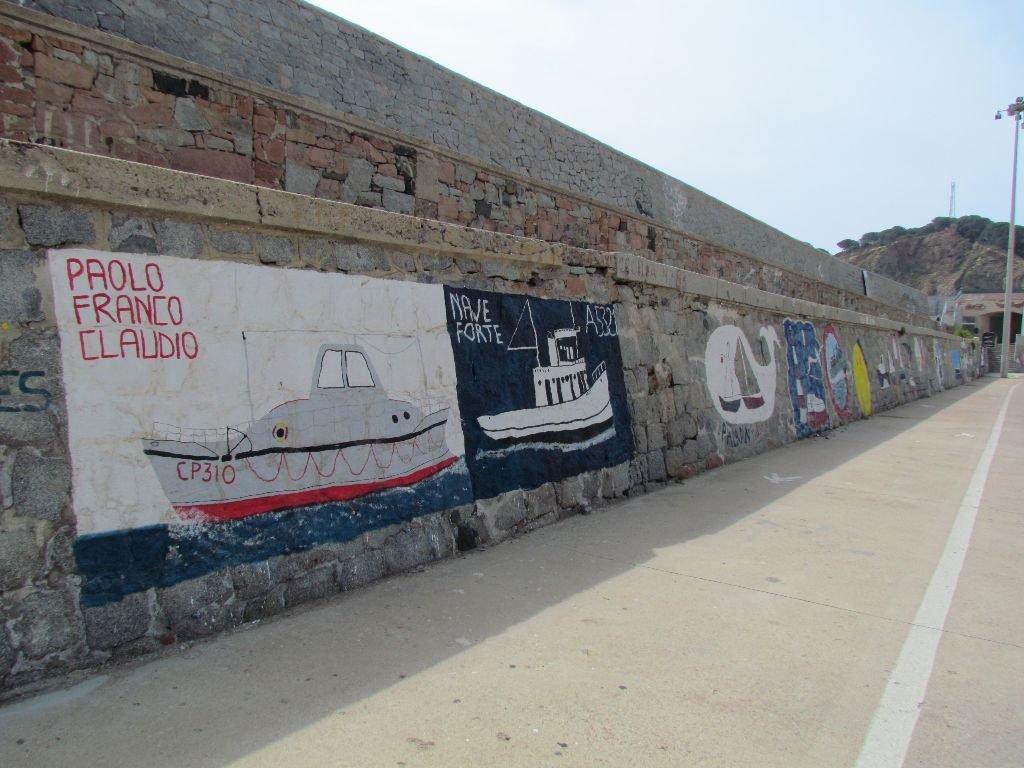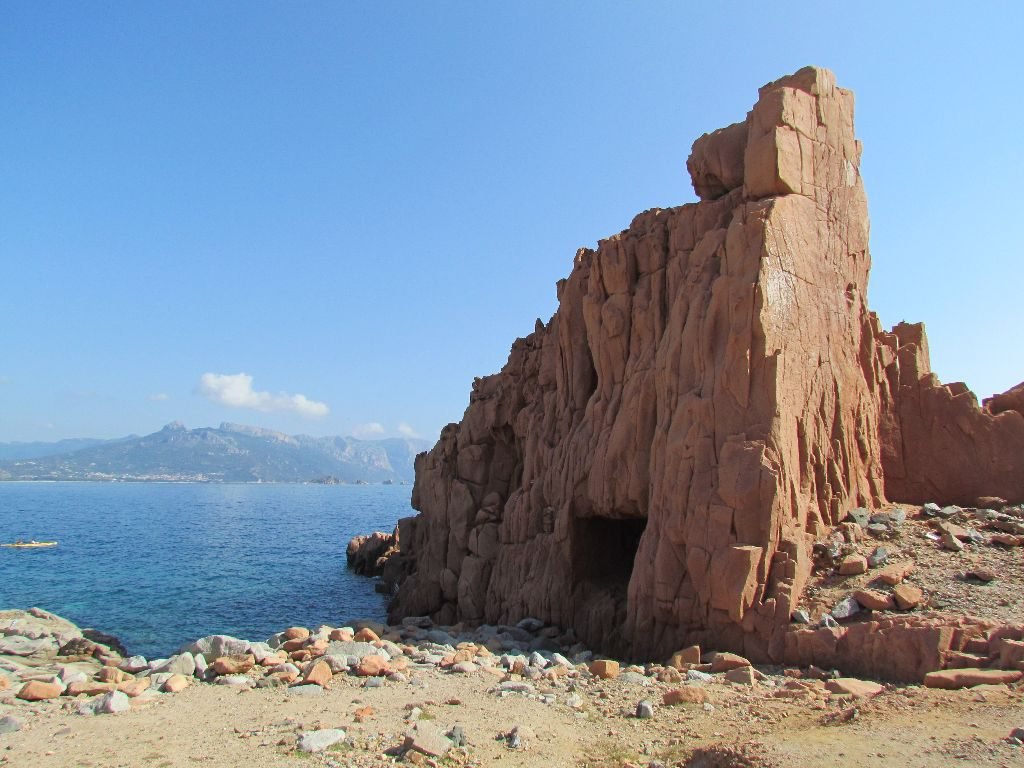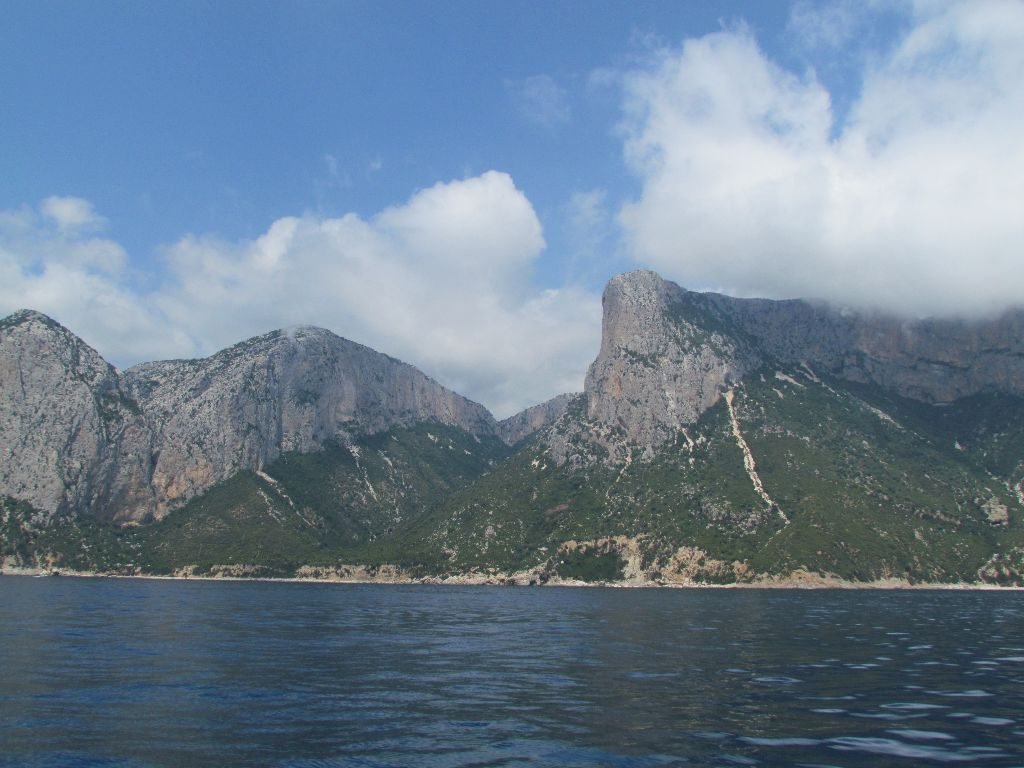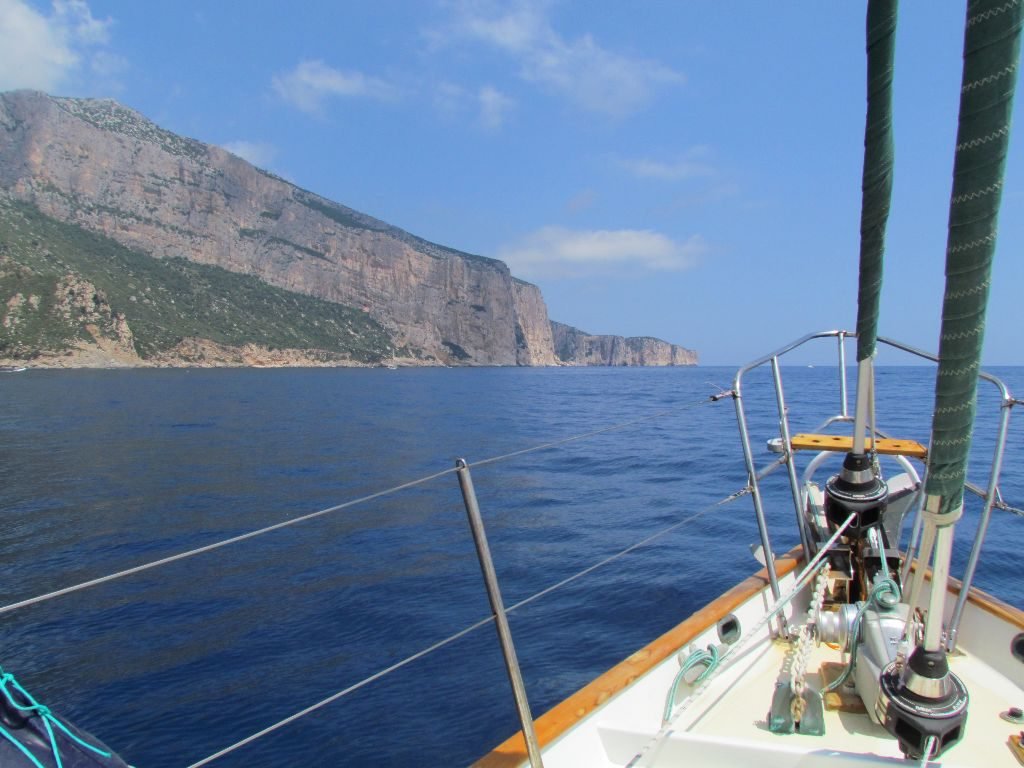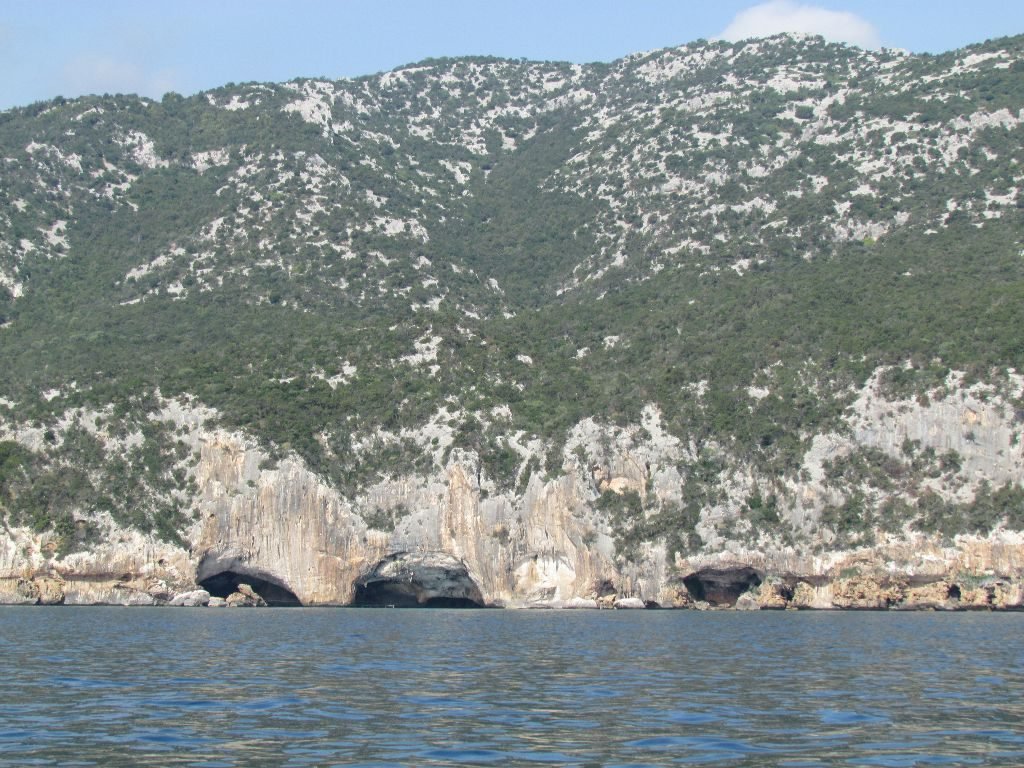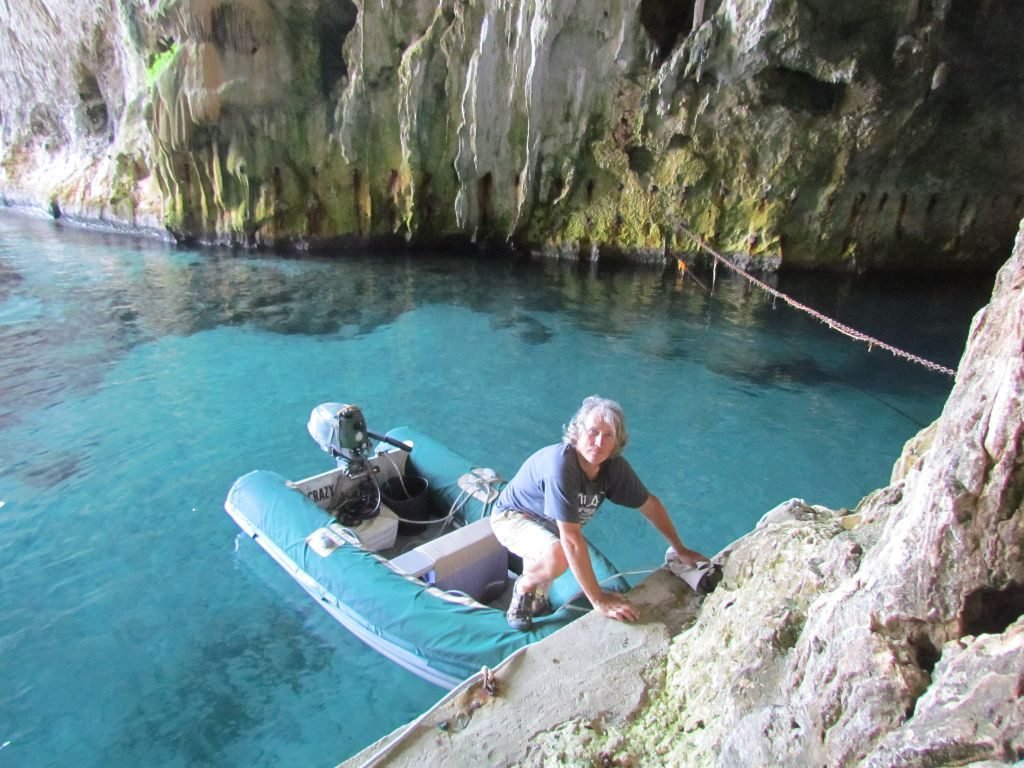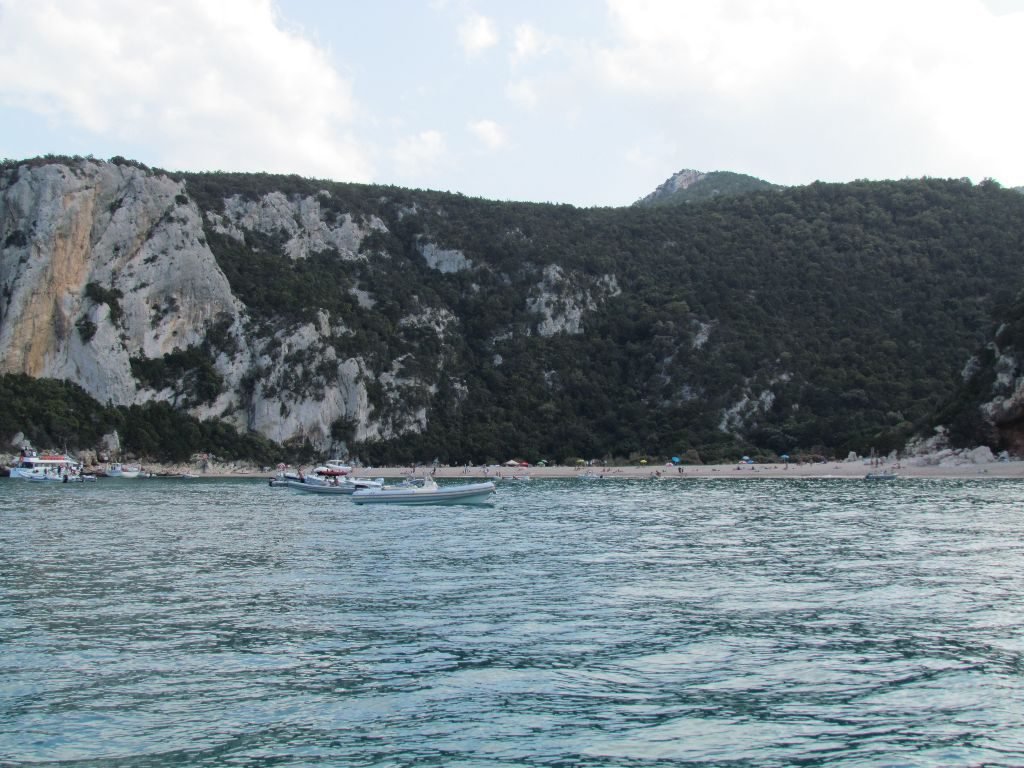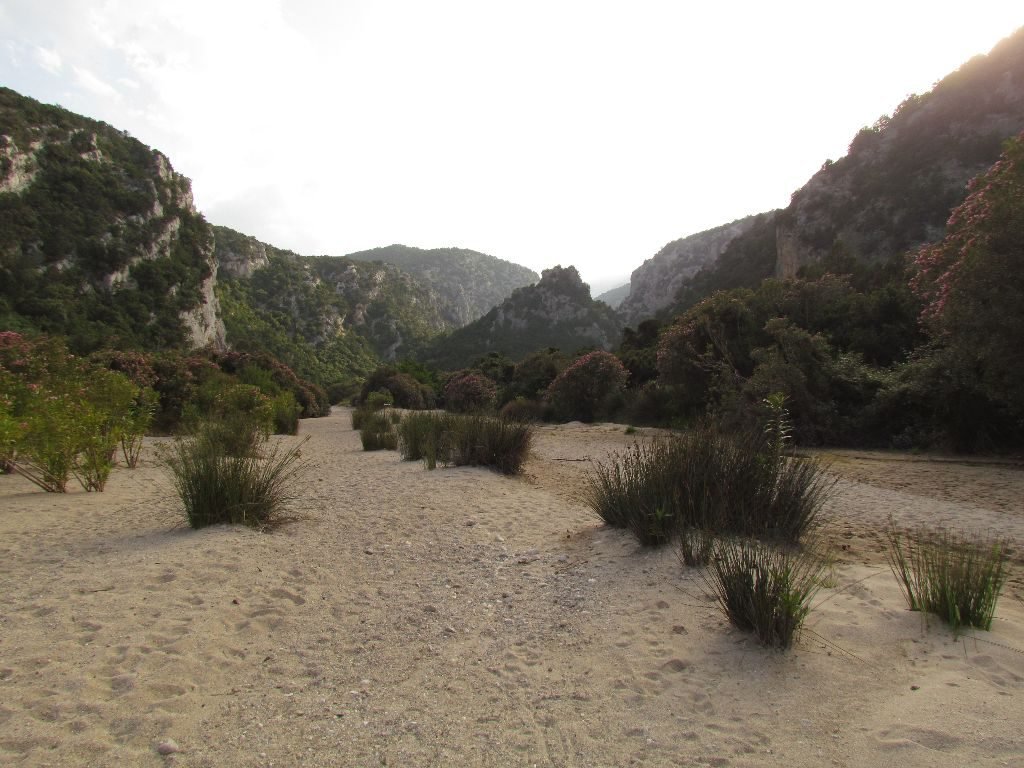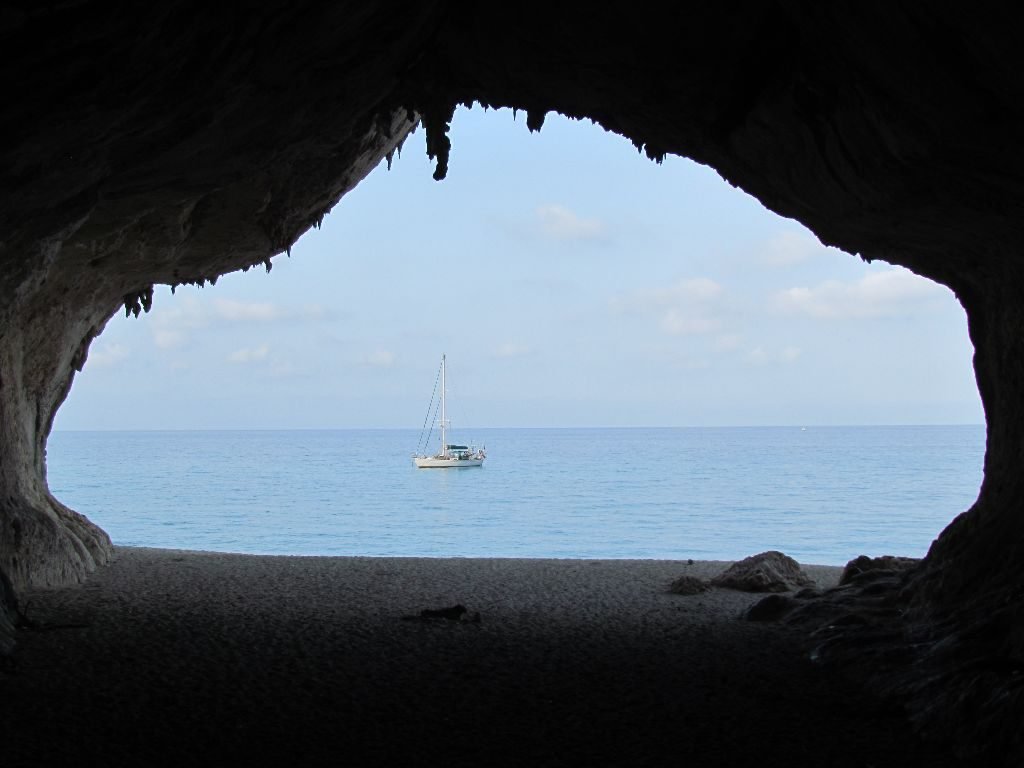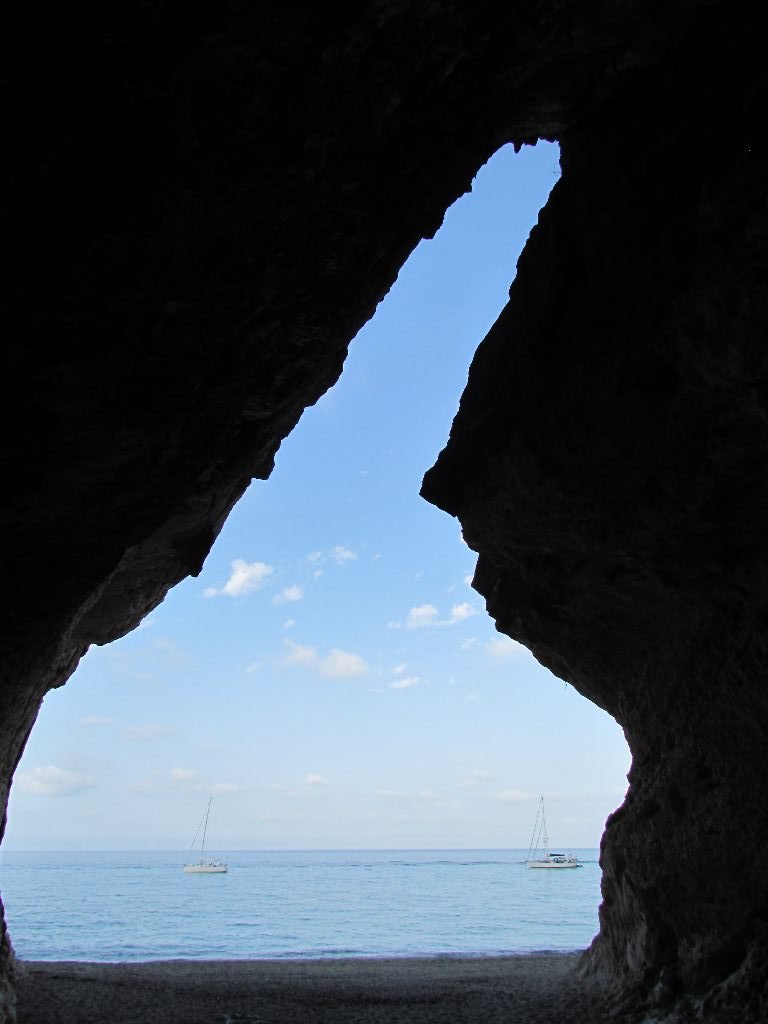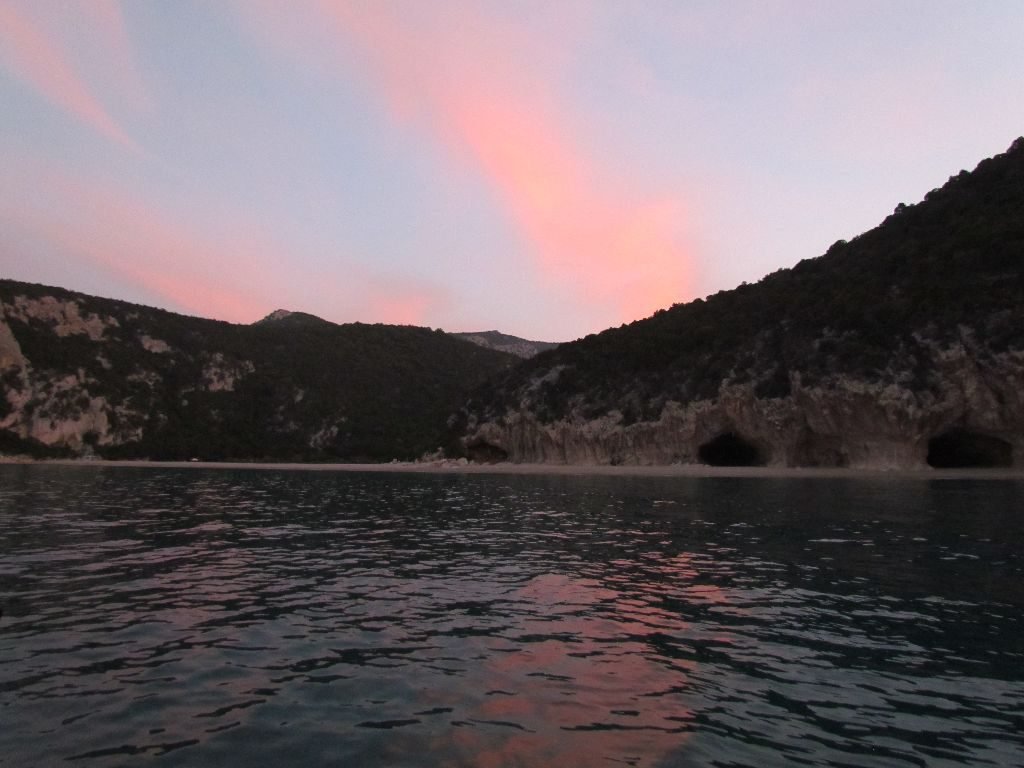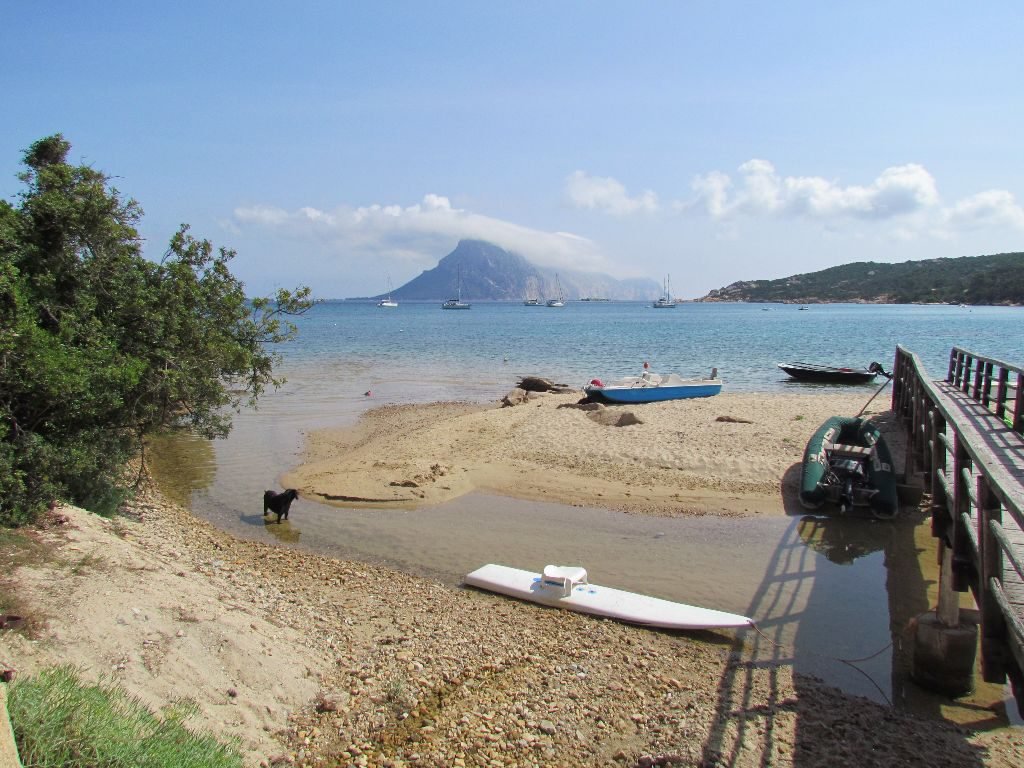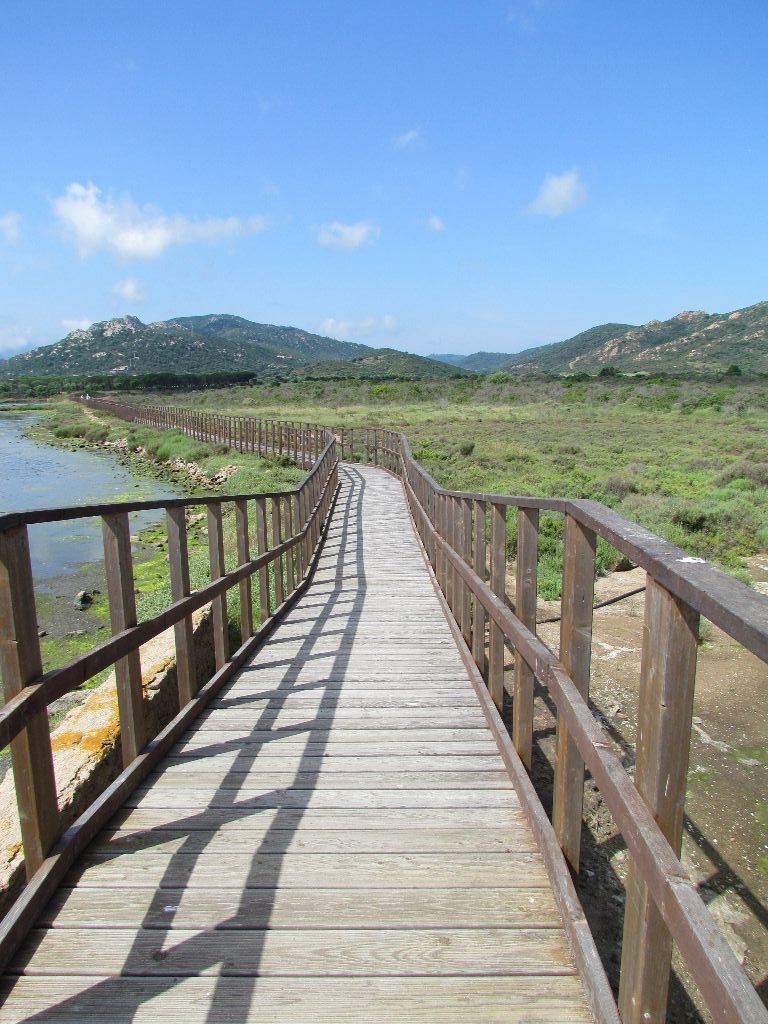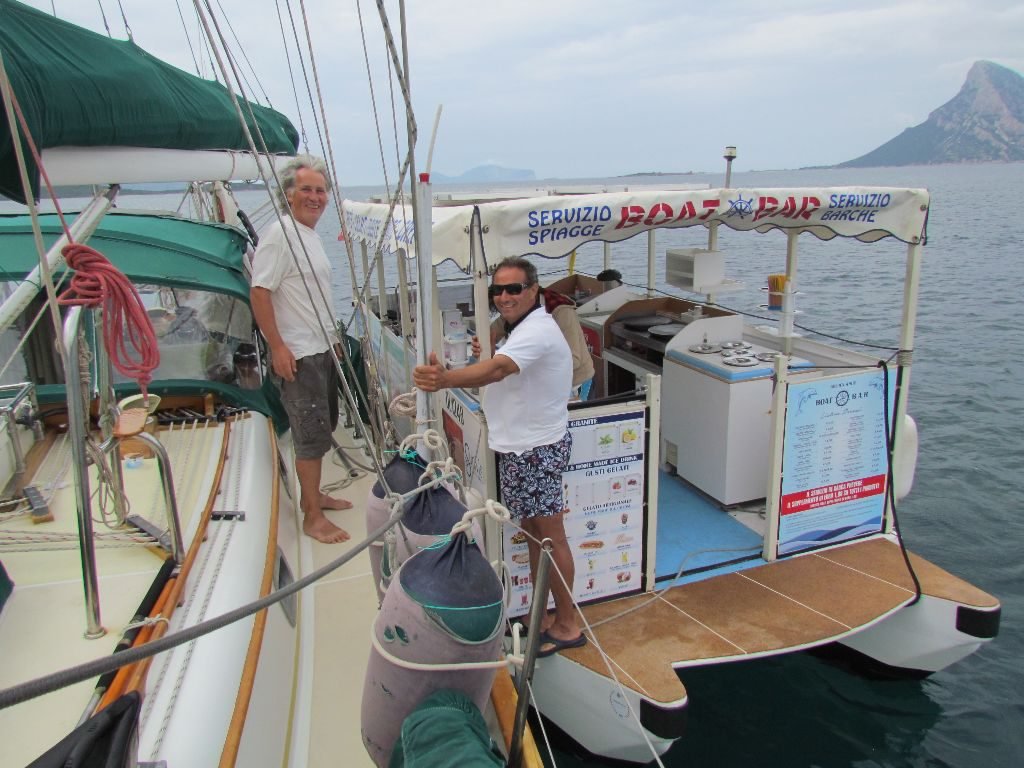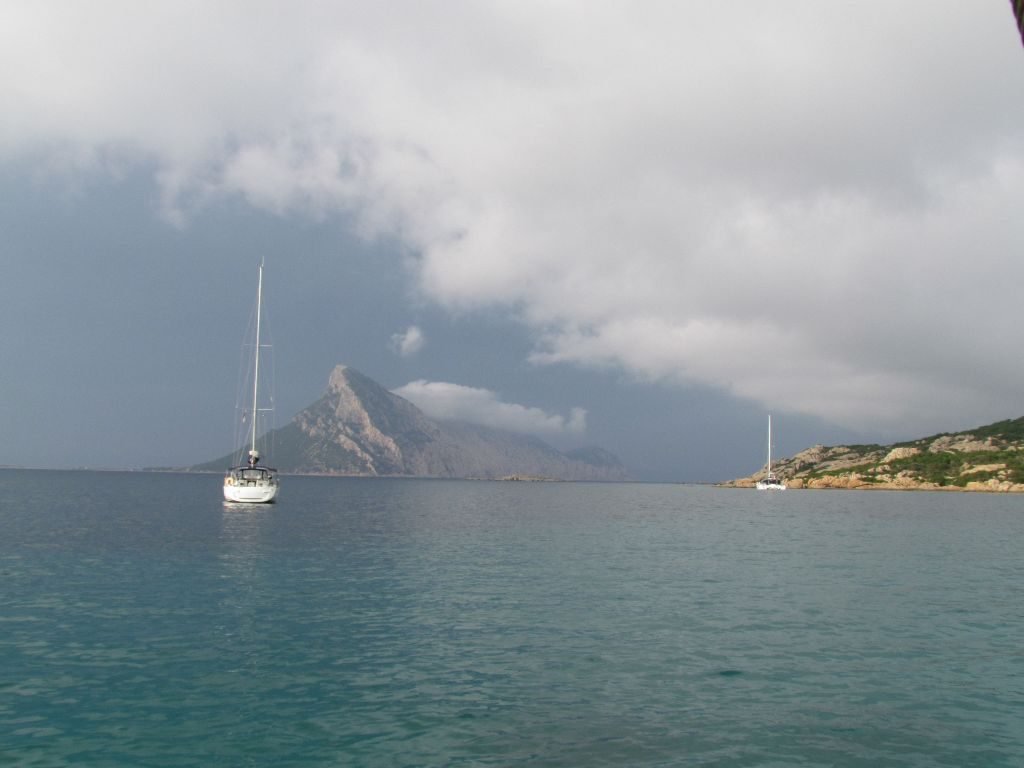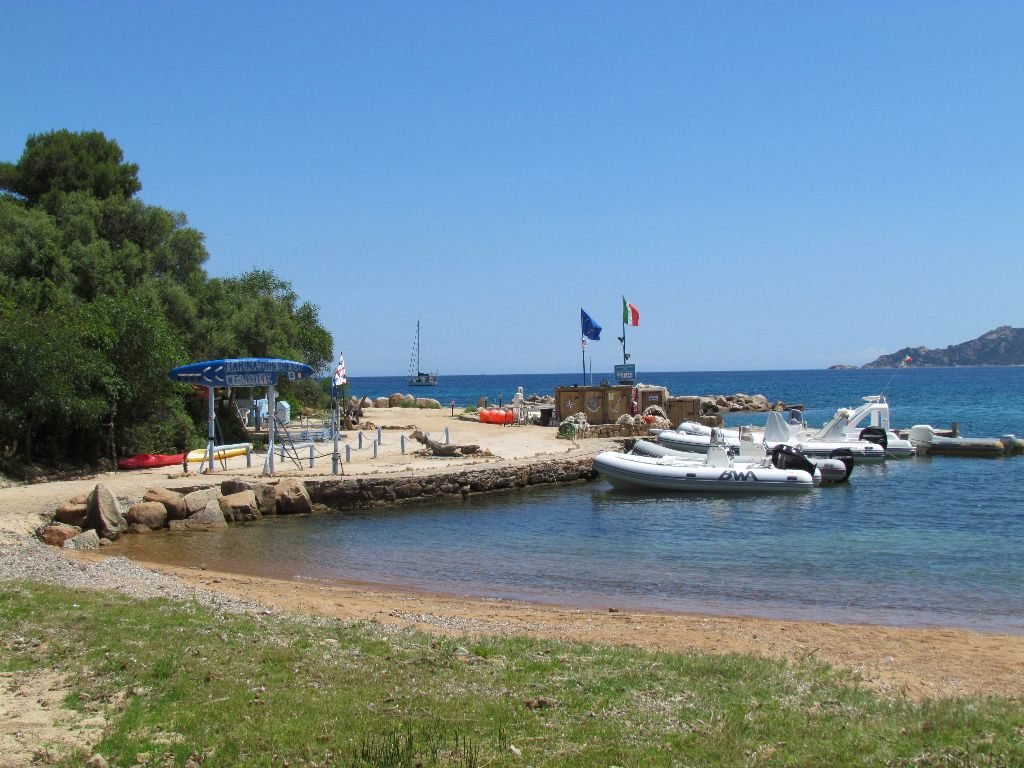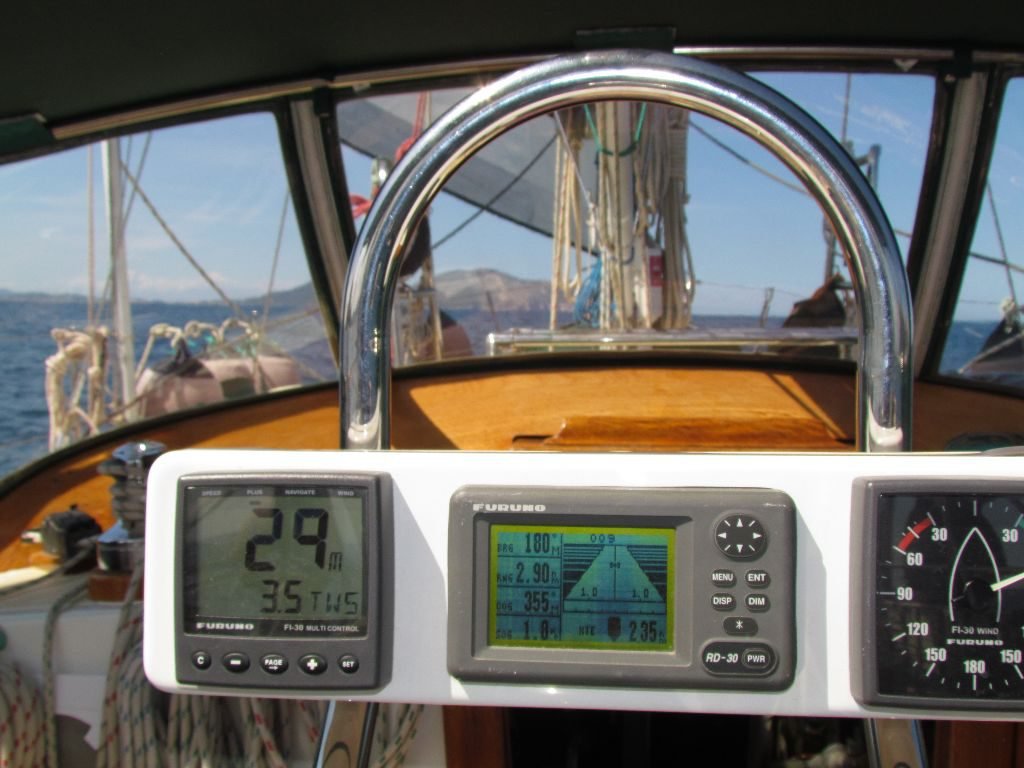Cabo Carbonara to Olbia
The east coast of Sardinia is a long stretch of sandy beaches backed by mountains, in places very spectacular. Unfortunately, there aren’t that many sheltered anchorages, particularly if there is any swell. This meant our first trip was a fairly lengthy 55nm to Arbatax and an early start even with longer daylight hours. Our plan was to depart Monday morning, however the weather forecasts were contradictory – one was showing SE winds which were good, the other NE and strong with it, which was bad. We decided to get up at 6am anyway and see what was happening. The strong NE turned out to be correct and it blew on for most of the next two days, up to 40kts for a while, leaving us trapped onboard. Time was put to use on crafty creations and researching Sardinia.
On Wednesday morning, our second attempt at leaving was successful with light winds greeting us when we woke at 6am. They were still from the NE though with the forecast showing them going west from 7am so we hung around for another hour to see what happened and amazingly, by 7am Emerald was pointing her bows to the west in the light breeze that had set up. In our experience, it’s not often that happens with weather forecasts to that accuracy!
As we motored around Cabo Carbonara the swell greeted us, a long rolling one with a height of at least one meter. The main went up to give us some stability. All through the day the swell refused to die down and seemed to getting higher as we closed on Arbatax. It would be a grim, rolly night at anchor in that so we plumped on going in to the marina. We were pleased to find friendly staff and sensible prices (E30 a night) as we were still in May, and decided to splash out and stay two nights.
Arbatax
Arbatax is a pretty fishing village with discreet holiday resorts dotted around. It’s a small place with a handful of restaurants and two supermarkets on the outskirts. The Green Train departs from here and heads into Sardinia’s hills; unfortunately we were a couple of weeks too early for it to have started it’s summer schedule.
We tried to walk up to the lighthouse but were discouraged by the signs saying military zone with pictures of snipers on them. If your language is limited, a picture paints a thousand words! We then tried the Battery Park walk but the entrance to that was all boarded up and there was a big fence around it. Third time lucky we headed on out past the industrial zone to the sand dunes and beach that runs to the north of the village and had a nice walk there.
We were surprised how many boat yards there were in the area, most still full of boats so I guess the season hasn’t kicked off for most people here yet.
Cala Luna and the Gulf of Orosei
Our decision to stay two nights was partly driven by our desire to anchor off Cala Luna to visit the Bue Marino Caves for which we needed to give the swell time to drop down. As we motored off Friday morning there was still a low swell but we reckoned it would be manageable and with no wind in the forecast, might drop off further.
The scenery up the coast is stunning, with high, dramatic cliffs falling into the blue sea. Caves and sandy coves dotted the grey and caramel coloured walls with wispy clouds brushing the tops. As we turned into the Gulf of Orosei the boat traffic increased dramatically with masses of RIBs whizzing around as they visited the different calas. It was hard to tell what was swell and what was boat chop.
The caves have tours at 11am and 3pm at this time of year and we had arrived in time for the 3pm tour. We left Emerald at anchor, bouncing around in the boat wakes off Cala Luna and dinghied the 1nm to the caves. We were pleased to find there was a quay inside the cave with places to tie up the dinghy. It turned out we were early as we had to wait for the trip boats arriving from Cala Gonone which didn’t depart from there until 3pm.
The caves are amazing but annoyingly no photography was allowed, even without flash, something to do with a copyright agreement with the town that manages the caves.We were split into two groups – one for Italian speakers, the other for English. and given a talk on the caves history. We were then directed along a metal boardwalk – excitingly in places as the damp cave makes the metal slippery – sitting above the sea water that penetrates up to 1km inside the cave system. Carefully placed lighting creates some beautiful colours in the water, mostly greens and blues and mirror perfect reflections. The cave used to be the refuge of the Monk Seal but sadly tourism has chased them all away and there are now no more Monk Seals remaining in Sardinia.
We passed through huge soaring caverns with smooth, white ceilings that looked like plasterers had just been in. The pearly white was offset by rust red iron deposits streaking down the walls like the evidence from a particularly brutal murder. Amongst the red and white were the otherworldly creations of stalagmites and stalactites – we had lots of fun playing at spotting faces.
At the end of the walkway is the largest cavern and the point where the sea no longer reaches and the river is fed by fresh water; in winter the level can be 4m high. The caves run for many more miles under the mountain range but beyond where we were only cave divers could continue.
As we left the caves to return to Emerald, so of course did all the other boats, both fast RIBs and the bigger trip boats, and we had a bouncy old time in the washing machine chop. We could see Emerald rearing and rolling at anchor as the boats passed by to disgorge their guests onto the pontoon at Cala Luna. The boats then went and bobbed at sea for an hour or so so others could use the pontoon. In dribs and drabs the RIBs began to leave and soon all the trip boats had gone too. By 6pm it was a much more calmer place and I went ashore for a wander. Behind the beach is a small a lake fringed by pink oleander and behind it lay a scenic canyon with high mountains rising in the background; it was a beautiful sight. Opposite where we were anchored were several caves which were begging to be investigated despite a sign saying no entry due to risk of rock falls. Many people during the day had ignored the signs too!
Although there was still a small swell it wasn’t enough to disturb our sleep and we slept well. The first RIBs began to arrive as we upped anchor the next morning, just after 9am.
Porto Taverna
We managed to get a couple of hours of sailing from the SE wind as we headed on north. We were aiming for an anchorage at Porto Brandinchi, but with that wind came a swell which was going straight into the bay, so we continued round into the Capo Coda Cavallo marine reserve and the Cala Girgolu anchorage on the south side of Porto Taverna. Our chart app was saying that anchoring was restricted throughout the reserve but when we arrived there were plenty of other boats already there.
The water was very clear and we were able to pick out a large sand patch to drop the hook.
The next morning we went ashore for a walk, but unfortunately this area is riddled with “private – no entry signs” and chains across the roads. We walked along the only route open to us and ended up at the long, sandy beach of Porto Taverna. There is a boardwalk along the salt lakes behind the beach and a couple of beach bars dotted around. We then tried to walk along the finger of land in front of where we were anchored, but once again, someone had been busy with the private signs.
The coastline has some interesting weather eroded rock formations and there are some pretty sandy coves that are open to the public, you just have to walk along the foreshore to get to them. There are no facilities but then the Bar Boat arrived and had a very captive market of thirsty people on the beach.
The next day the winds went north making the anchorage uncomfortable, so we simply went 1nm to the north side of the bay where we had better shelter. There was much more weed here and it took us two attempts before we snagged in a sandy patch.
Ashore there is a small boat marina where we tied up Crazy Horse to attempt another walk ashore. Once again we were confined to main roads. We found access to some pretty beaches but couldn’t do the loop we’d have liked to do, our way blocked by gates where we planned to go. The problem with Google maps is that it shows you roads and tracks but doesn’t tell you if a road is private!
The winds seem to not be able to make their mind up around here, and that afternoon they went back SE. We used them to push on north, having a very, very slow sail. We headed for the bay just outside the entrance to Olbia called Liscia Delle Saline, but despite it looking like it should be sheltered, the remains of the swell from the north wind made it very uncomfortable. With just a few hours of daylight left, we gave up and went on into Olbia, deciding discretion was the better part of valour as we pulled over to let an enormous ferry go by rather than have it chase us down the entrance channel.
There were a few spaces available on the quay at Molo Brin and we slotted ourselves in alongside, down in the bottom corner. The quay is free but without any services. The next few days brought rain and thunder so we didn’t get much exploring done.
Sailing Info
Cabo Carbonara to Arbatax, 57nm travelled.
In Arbatax marina, bows to with laid lines in position 39 56.264’N 9 42.282’E
1st June – Arbatax to Cala Luna, 19nm travelled
Anchored in sand in 6m in position 40 13.657’N 9 37.673’E
2nd June – Cala Luna to Cala Girgolu in the Punta Coda Cavallo nature reserve. 44nm travelled (10nm sailed)
Anchored in 5.5m in sand in position 40 51.374’N 9 40.088’E
At the western end of the beach is a small river with a bridge across it, to which we tied the dinghy.
4th June – Cala Girgolu to Porto Taverna north side. 1nm travelled
Anchored in sand (lots of weed patches) in position 40 52.222’N 9 39.444’E in 9.5m
Small boat marina nearby where we tied up the dinghy.
5th June – Porto Taverna to Olbia Commercial Quay via Saline Beach. 14nm travelled (7nm sailed)
Mooring alongside the quay in the corner at the landward end, position 40 55.365’N 9 30.364’E
Depth is 4.5m


